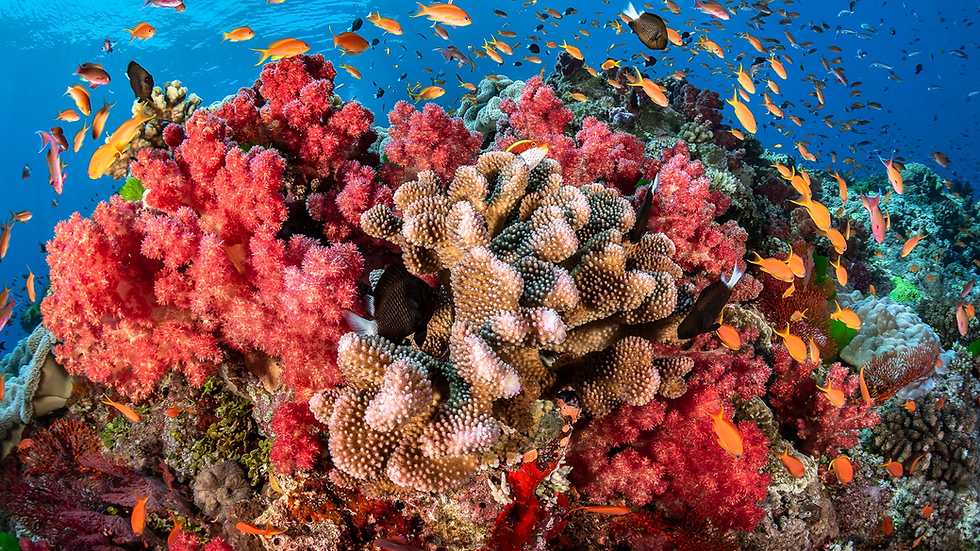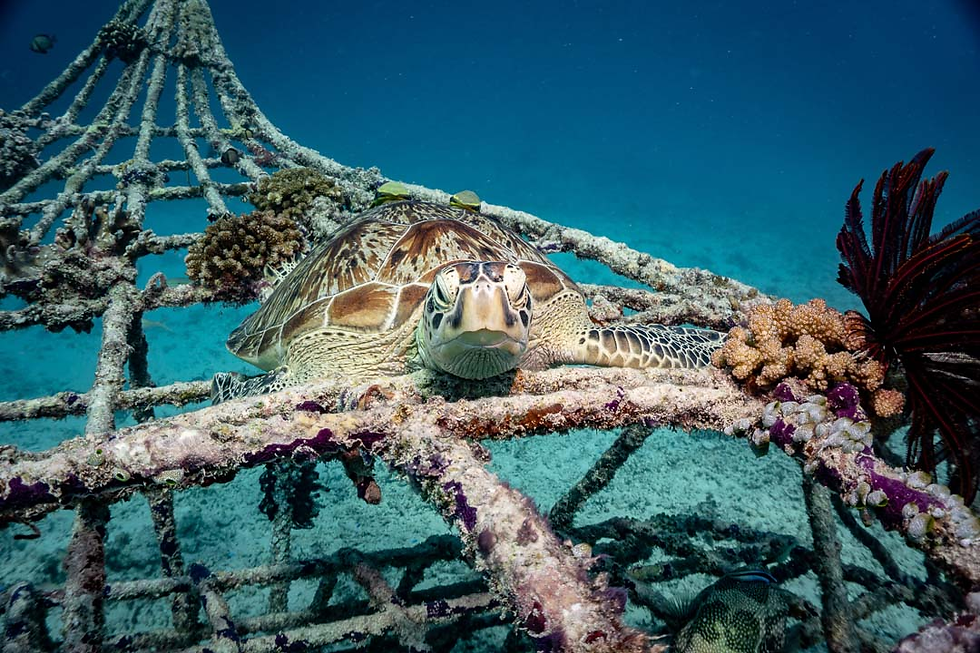The earth depends on the ocean for its survival. It's current connects all living organisms of the earth. The ocean is the lungs of aquatic life and terrestrial life.
With the coral reefs declining rapidly, due to global warming, the ocean and its marine life is threatened and critically endangered.

Source:- https://www.nationalgeographic.com/science/article/scientists-work-to-save-coral-reefs-climate-change-marine-parks
Coral reefs are home to various species of marine life and offer them protection from threats. It is a habitat for thousands of species of fish for feeding, spawning and also provides a natural nursery ground for aquatic life. With the responsibility of protecting and the survival of the entire underwater ecosystem, there is an urgent need to save them from the exhaustive damage caused by global warming.
What are coral reefs and why are they declining?
The coral reefs are formed from the skeleton made up of calcium carbonate called calicle. On this skeleton there are billions of tiny soft bodied organisms called coral polyps which are attached to this protective limestone.
With the ocean temperature rising, and increase in industrial activities, overfishing and pollution, there is a drop in water quality due to toxic sedimentation of waste products like oil, micro plastics etc. This causes the coral reefs to expel symbiotic algae, which results in their bleaching into white. Thus effectively dying.
Biorock technology is one of the means to save these reefs.
The idea of biorock technology was first thought out by the architect professor Wolf Hilbertz and later was developed by him and Dr Tom Goreau, a biogeochemist. This technology aims to restore marine ecosystems and build a conducive environment for the reefs to grow.
So what exactly is a Biorock and how do they work? Biorock or seacrete or seament, is a substance which is formed by accumulation of minerals dissolved in ocean water. Its build and strength closely resembles concrete. They are structures made of steel which can take any shape.
Biorock technology or Mineral accretion technology is a method through which artificial reefs are built by using crystallised minerals which are deposited on the structure through electricity.

Source:- https://dan.org/alert-diver/article/biorock-electric-reefs/
Yes, you read that right. Electricity is one of the crucial elements required for these reefs to grow.
Now you must be wondering on how are these artificial reefs built?
Well first, a wireframe or a steel structure is set up underwater through which a very low voltage current is applied. This creates an electric field around the reef. Electricity helps coral reefs grow healthier and speeds up the process. Once these power cables are connected, the current runs through the biorock. The process of electrolysis begins. The electrolysis between water and metal forms calcium carbonate. Corals use these minerals to form skeletons made of limestone. Then, coral pieces are attached to these skeletons to grow and build their own colony. The electric field provides them energy to grow, resist environmental threats and to reproduce.
So how is biorock technology helping the reefs?
The use of this technology is resulting in faster growth of corals. With the help of this technology, corals can grow up to 8 times faster. This helps in increasing the pH of limestone structure, which helps the minerals grow out of seawater. Thus enabling the corals to grow much faster than they usually were able to.
The reefs are able to recover quickly from damage. Due to the electricity supplied to these rocks, any damage caused to the corals, whether it is due to any natural calamity or by humans, the rocks are able to repair and recover on their own.
There is an increase in resistance against environmental stress. Biorock structures are stronger and sturdier than other coral ecosystems and are 50 times more resistant from environmental stress.
Apart from this, these structures result in increased densities of resident fish, oysters, lobsters, and other marine life.
Like every other technology has its own cons, biorock technology is no different. It has it's own set of challenges and limitations. One of the main challenges is the cost of the technology, which can be significant. Additionally, the maintenance of the biorock structures can also be costly and time-consuming. Furthermore, there are concerns about the potential negative impact of the biorock method on other marine species, such as sponges and other filter feeders, which may be outcompeted by the coral growth on the biorock structures.

Source:- https://giliecotrust.com/biorock/
The Biorock technology also needs to take care of it's cost and maintenance, as well as potential negative impacts on other marine species. Despite these challenges, the biorock method has the potential to play a significant role in the preservation and restoration of coral reefs worldwide. It is important for ongoing research to continue in order to address the current limitations of the technology and make it more cost-effective and efficient for reef restoration efforts.
Nearly 500 biorock structures have been set up in 40 countries. Around 400 of these structures are situated in Indonesia. In India, the first solar powered biorock structure was set up in the Gulf of Kutch in Gujarat.
Biorock technology has been able to successfully restore coral ecosystems who were on the verge of completely being wiped out. These structures can be powered by using energy from wind, waves, sun and ocean currents, generated directly at the site. Requiring a low current of less than 12 volts, these structures are economical, environmentally safe to use and are sustainable for long term use.
In conclusion, biorock technology is a promising method of reef restoration that has been shown to be effective in the restoration and preservation of coral reefs. The biorock method can be used to restore coral reefs in areas where traditional reef restoration methods may not be feasible, and it can also promote the growth of coral at a much faster rate than traditional methods.
As ongoing research continues to improve the technology and make it more cost-effective and efficient for reef restoration efforts, it is important for conservationists and policymakers to consider the biorock method as a viable option for reef conservation efforts in the future. The earth depends on the ocean for its survival and its our responsibility to protect it.
Biorock technology is a ray of hope for the dying coral reefs and a step towards a sustainable future.
Article by- Sunanda Singh
Edited by:- J Shree Nidhi




Comments